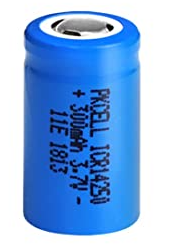How to Select an IC for a Battery Management System (BMS)

In this article, we go over criteria how to select an IC that is appropriate for the battery management system (BMS) that you want to implement.
So there are many ICs available on the market that aid the functioning of battery management systems. There are a variety of factors that need to be considered before choosing which IC is most beneficial for your particular battery management system.
These factors include things such as battery cell chemistry, number of cells in series, protection needed, whether balancing is needed, monitoring including voltage, current, and temperature, SoC estimation technique, FET control, fault detection, the necessary interfacing protocol, and whether a a microcontroller is needed for your system or not.
We explain these factors more in depth below. These factors will decide what type of IC you need for your BMS.
Battery Cell Chemistry
So one important factor is the type of battery cell chemistry that your battery management system uses.
This can be lithium ion cells or lithium iron phosphate cells.
This is important because the different type of cells have different nominal voltage levels.
Lithium iron phosphate cells have nominal voltages of 3.2V.
Lithium ion cells have nominal voltages of 3.6-3.7V.
So it is important to know which cell you are using for the nominal
voltage level of the cell.
Number of Cells in Series
Another important factor when choosing an IC is the number of cells there are in series in the system.
Varying ICs can deal with varying number of cells in series.
Thus, it is important to work with an IC that can accommodate the
total number of cells in the system.
Protection
One of the most important things that a battery management system needs to offer is protection.
A battery system needs protection from things such as overvoltage conditions, undervoltage, overcurrent, short circuit, open wire, overtemperature, and undertemperature protection.
Several of these factors shown above can cause serious safety concerns and possibly a fire; therefore, it is important to get an IC that has the necessary protection for your battery management system.
Overvoltage conditions can destroy the battery life (state of health) of the battery system and in some events can cause fires if high enough.
Undervoltage conditions leads to an inefficient system where charging may not be adequate and the system may not output sufficient power.
Open wire conditions are conditions in which there are disconnected or poorly connected wires which can cause errors with the BMS. The identification of faulty wiring can prevent issues of safety and performance of the system.
Overcurrent or short circuit conditions can cause overtemperature conditions and can lead to a fire.
Overtemperature conditions can signal a catastrophic event in the system and the BMS needs to take appropriate action such as implement cooling or shutdown.
All these conditions can be addressed by selecting an appropriate
IC that can offer protection against these happenings.
Cell Balancing
Another important consideration is whether your system requires cell balancing or not.
If you need cell balancing, then you need to know whether you require passive cell balancing or active cell balancing.
Pretty much all BMS ICs provide passive cell balancing capabiilites. Only a few ICs provide
active cell balancing, so these require more specialied search.
Monitoring
Another thing you need to consider is the monitoring you need in your BMS.
This includes voltage monitoring, temperature monitoring, and current monitoring.
In many of the ICs, voltage monitoring and temperature monitoring are built in to the IC.
Current monitoring would be more difficult to find in an IC.
In the case that the BMS chip doesn't have the monitoring you require, you would need
external circuitry to provide the monitoring.
SoC Estimation Technique
Another thing that must be considered is what type of SoC estimation technique you are looking for.
This serves as the fuel gauge for the battery to determine its charge.
Some BMS ICs provide this directly so that the state of charge can be measured.
However, if the BMS IC lacks this capability, you will need to gauge this externally.
Drive Control
Another consideration is the means of control of the battery from either the load or the charger.
This can be done mechanically through a contactor, external to the IC, or it can be done
internally in the IC through field effect transistors such as MOSFET transistors.
Fault Detection
Another consideration is the sophistication of fault detection.
So if the BMS requires a fault in the system, do you want simply an alert that a fault has occurred or do you require more advanced functionality such as detecting the fault and then implementing system changes such as an automatic shutdown?
Some BMS ICs simply detect faults, while others can detect fault and implement system
responses to reaction to the fault.
Interfacing Protocol
If you are using an external IC for some of the capabilities, you will need to connect it to the BMS IC and use some communication protocol so that the two ICs can communicated with each other.
Therefore, your BMS IC must have an interfacing protocol, whether it be UART, I2C, SPI, etc. to be able to communicate with the external IC.
If you are just using the BMS IC standalone, then you won't have to worry about an
interfacing protocol, as you don't require external communication with another IC.
Aumotive Grade or Industrial Grade IC
There are 2 major types of grades of BMS ICs: automotive grade or industrial grade ICs.
Automotive grade are required and used in the automotive industry. They are higher quality than the industrial grade; thus, they tend to be more expensive.
If you are using your application for non-automotive use, then the industrial grade
may be suitable, as it is more economical.
So these are criteria needed to help you select the necessary BMS IC for your application.
Related Resources
